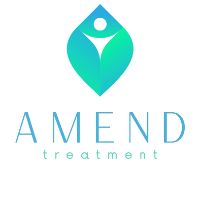Family Involvement Programs
Substance abuse and mental health disorders affect not just the individual but the entire family system. As such, recovery efforts are significantly more effective when families are actively involved in the treatment process. Family involvement programs have emerged as essential components of comprehensive care, providing education, support, and therapeutic opportunities for loved ones of individuals in treatment. These programs aim to break cycles of dysfunction, improve communication, and foster a supportive environment that can dramatically increase the chances of long-term recovery. Whether through family therapy, psychoeducation, or structured support groups, these programs empower families to become allies in the recovery journey, rather than passive observers or unintentional enablers.
Understanding the Role of Family Involvement in Treatment
Families often serve as the first responders to behavioral changes or crises related to addiction and mental illness. They witness the emotional turmoil, financial instability, and physical health decline that frequently accompany these disorders. However, family members may lack the tools or understanding needed to effectively intervene or offer support. Family involvement programs educate relatives about the nature of addiction and mental health conditions, addressing myths and stigma while promoting empathy and informed care. These family involvement programs also clarify boundaries and roles, helping families to distinguish between enabling behaviors and supportive actions.
A core component of family involvement is therapy, which may include conjoint sessions with the individual in treatment or separate therapeutic support for family members. The therapeutic process often uncovers unresolved conflicts, codependency, or generational trauma that contribute to the client’s challenges. When these underlying issues are acknowledged and addressed, the healing process accelerates for everyone involved. Family therapy also helps improve communication, set healthy boundaries, and develop strategies for conflict resolution, ultimately strengthening the support system that individuals need during recovery.
Family Involvement Programs - Models and Therapeutic Approaches
Family involvement can take many forms depending on the treatment setting and individual needs. In inpatient and residential programs, families may be invited to attend weekly family days, structured group sessions, or weekend intensives that offer immersive educational and therapeutic experiences. Outpatient settings often incorporate ongoing family therapy as part of the treatment plan, and some facilities provide family-specific programs independent of the client’s primary care.
Psychoeducational groups are another vital aspect of family involvement programs. These sessions teach family members about the biology of addiction, mental health diagnoses, relapse triggers, and effective coping skills. Support groups like Al-Anon, Nar-Anon, or NAMI Family Support Groups provide peer support and reduce feelings of isolation. Many family members report that simply connecting with others who have faced similar challenges is a powerful therapeutic experience in itself.
Benefits and Challenges of Family Involvement Programs
Numerous studies support the inclusion of families in the treatment process. Outcomes show that individuals whose families are involved in treatment are more likely to complete programs, remain abstinent, and experience improved mental health. Additionally, families benefit personally from these programs. They often report decreased levels of stress, anxiety, and depression, as well as improved relationship satisfaction and parenting skills.
Ultimately, recovery is not a solo endeavor—it is a collective journey that requires collaboration, patience, and resilience. Family involvement programs not only help individuals achieve sobriety and stability but also lay the foundation for healthier, more connected families.
FAQs - Family Involvement Programs
A family involvement program is a structured component of treatment that actively engages family members in the recovery process of an individual facing substance use or mental health issues. These programs are based on the understanding that family dynamics, communication patterns, and emotional support systems can significantly influence the recovery journey. Family involvement can include education, counseling sessions, and group therapy to build healthier relationships and support long-term healing. For example, a treatment center may host weekly family workshops where parents, siblings, or spouses learn about addiction, co-dependency, and communication strategies. These programs aim to reduce stigma, enhance empathy, and equip families with tools to support recovery effectively.
Family therapy, a part of family involvement programs, can strengthen recovery outcomes by improving communication, rebuilding trust, and addressing dysfunctional family patterns that may contribute to the client’s condition. It provides a space for family members to express concerns and receive guidance on how to respond supportively rather than reactively.
Family participation is encouraged but not typically required. While it is beneficial, treatment centers recognize that not all families are willing, available, or emotionally prepared to take part. The decision to involve family is usually based on the patient’s preferences and clinical recommendations. However, some facilities may strongly recommend family involvement, especially in adolescent programs or for individuals whose recovery heavily depends on family dynamics. Participation is often voluntary, and accommodations (such as virtual sessions) may be offered to make it more accessible.
Family involvement programs commonly include several therapeutic approaches such as family systems therapy, cognitive-behavioral therapy (CBT), multi-family group therapy, and psychoeducation sessions. These methods aim to improve communication, set healthy boundaries, and address any shared trauma or misunderstandings within the family unit. For example, a program might offer multi-family group therapy where several families meet together to share experiences and insights, led by a licensed therapist. This approach helps normalize challenges and fosters community support.
Yes, many family involvement programs extend into the aftercare phase to help families support the patient’s long-term recovery. These may include ongoing family therapy sessions, relapse prevention planning, and support groups for family members such as Al-Anon or NAMI Family Support. Continuing family involvement after discharge reinforces positive behaviors, provides accountability, and helps families adjust to new dynamics. For example, a monthly check-in session may be offered as part of aftercare to maintain family communication and monitor any signs of relapse.
Resistance is common, especially if family members feel guilt, denial, or discomfort. The best approach is to provide them with education about the benefits of their involvement and gently encourage participation without forcing it. Often, offering an introductory session with a therapist can help break the ice. Sometimes, just one willing family member joining the process can make a difference. Therapists may also work with the individual in treatment to explore how to manage family dynamics even without full participation.
Yes, family therapy can bring unresolved issues to the surface, which may initially feel uncomfortable or even painful. However, when guided by a trained therapist, these moments are opportunities for healing. The goal is not to reopen wounds, but to address them in a constructive and supportive environment. For example, in therapy, a parent may confront their role in enabling behaviors, while the recovering individual may express past resentments. A skilled therapist ensures these discussions are handled with care and therapeutic purpose.
Yes, family involvement programs are typically offered in both outpatient and residential treatment settings, though the structure may differ. Residential programs may offer intensive family weekends or on-site therapy sessions, while outpatient programs often provide ongoing family therapy as part of weekly or bi-weekly schedules. For instance, in an outpatient setting, family sessions might be scheduled in the evenings to accommodate work schedules, while in residential care, families may participate in weekend workshops or virtual meetings.
In many cases, family therapy is covered by private insurance, Medicaid, or Medicare, especially when deemed medically necessary and conducted by licensed professionals. However, coverage details vary depending on the insurer and policy terms. It’s advisable to contact the insurance provider to confirm whether family services are included and whether pre-authorization is needed. Treatment centers often have financial counselors who help families navigate insurance coverage and billing questions.
To find a treatment center with robust family involvement, look for facilities that explicitly mention family therapy or education as part of their treatment model. Accredited programs often detail these services on their websites. You can also call centers directly and ask about their family therapy protocols, session frequency, and therapist qualifications. Referrals from mental health professionals or recommendations from local support groups like Al-Anon can also lead you to reputable programs. Online directories such as SAMHSA’s Treatment Locator allow filtering for facilities offering family therapy services.
Summary
Family involvement programs are a cornerstone of effective treatment for substance abuse and mental health disorders. By incorporating families into the recovery process, these programs foster deeper healing, improve communication, and enhance the long-term success of individuals in treatment. From family therapy to support groups and educational workshops, the spectrum of services available ensures that both clients and their loved ones are empowered with the knowledge and emotional tools they need. Despite potential obstacles, the benefits of family involvement are clear—stronger relationships, reduced relapse rates, and a more stable, compassionate home environment. Encouraging family participation is not only best practice but also a vital part of sustained recovery.
Sources
- Center for Substance Abuse Treatment. Substance Abuse Treatment and Family Therapy. Treatment Improvement Protocol (TIP) Series, No. 39. SAMHSA.
- National Institute on Drug Abuse (NIDA). Principles of Drug Addiction Treatment: A Research-Based Guide (Third Edition).
- National Alliance on Mental Illness (NAMI). Family Support Group Guide.












